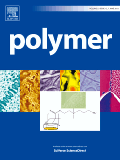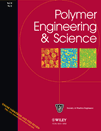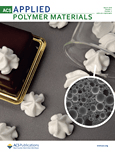
POLYMER SCIENCE SERIES B
Scope & Guideline
Pioneering Insights in Polymers and Plastics
Introduction
Aims and Scopes
- Polymer Synthesis and Modification:
Research in this area includes the development of novel synthetic methods for polymers, including radical, ionic, and coordination polymerizations, as well as the modification of existing polymers to enhance their properties. - Characterization Techniques:
The journal highlights studies that utilize advanced characterization methods, such as spectroscopy, microscopy, and rheology, to analyze the structure and properties of polymers. - Biopolymer Research:
There is a strong focus on biodegradable and bio-based polymers, exploring their synthesis, properties, and potential applications in sustainable technologies. - Nanocomposites and Hybrid Materials:
Research on the incorporation of nanoparticles into polymer matrices to create materials with enhanced mechanical, electrical, and thermal properties is a significant area of interest. - Functional Polymers:
The journal covers the development of polymers with specific functionalities, including stimuli-responsive, antimicrobial, and conductive polymers, for applications in diverse fields such as medicine and electronics. - Polymer Processing and Applications:
Studies related to the processing of polymers and their subsequent applications in industries such as packaging, textiles, and coatings are frequently featured.
Trending and Emerging
- Sustainable and Biodegradable Polymers:
There is a growing emphasis on the synthesis and application of biodegradable polymers and biocomposites, driven by environmental concerns and the need for sustainable materials. - Smart and Responsive Polymers:
Research into stimuli-responsive and smart polymers that can react to environmental changes is on the rise, highlighting their potential applications in drug delivery, sensors, and actuators. - Nanotechnology in Polymers:
The integration of nanotechnology into polymer science is increasingly prominent, with studies focusing on nanocomposites that enhance material properties for various applications. - Advanced Characterization Methods:
Emerging techniques such as in-situ characterization methods and advanced microscopy are becoming more common, enabling deeper insights into polymer behavior and properties. - Polymer-Based Drug Delivery Systems:
The development of polymeric systems for targeted and controlled drug delivery is gaining traction, reflecting advancements in biomedical applications.
Declining or Waning
- Traditional Thermoplastics:
There appears to be a waning interest in conventional thermoplastics as researchers increasingly focus on advanced materials and composites that offer superior properties or sustainability. - Rigid Polymers:
Research on rigid polymer systems, particularly those with limited functionality, has decreased as the field moves towards more versatile and multifunctional materials. - Conventional Coatings:
Studies focusing solely on traditional coating technologies are less common, with a shift towards coatings that impart additional functionalities, such as self-cleaning or antimicrobial properties. - Non-Biodegradable Polymers:
There is a noticeable decline in research dedicated to non-biodegradable polymers, aligning with global trends towards sustainability and environmental responsibility. - Basic Polymer Physics:
Research centered on fundamental polymer physics without direct applications has seen reduced emphasis, as the field trends towards application-driven studies.
Similar Journals

POLYMER
Fostering Excellence in Polymer ResearchPOLYMER, an esteemed journal published by Elsevier Science Ltd, stands at the forefront of polymer science, presenting cutting-edge research that encompasses the realms of Materials Chemistry, Organic Chemistry, and Polymers and Plastics. With a remarkable impact factor reflecting its significance in the academic community, POLYMER has been a vital resource since its inception in 1960, contributing to a converged body of knowledge through to 2024. Rated Q1 in all relevant categories as of 2023, and boasting impressive Scopus rankings, this journal not only facilitates advanced discussions in polymer synthesis, characterization, and applications but also serves as a critical platform for collaborative research among scholars, professionals, and students. While it offers content primarily via subscription, POLYMER remains dedicated to fostering innovation and excellence in the field, making it an essential read for anyone passionate about polymer science.

POLYMERS & POLYMER COMPOSITES
Elevating Understanding of Composite MaterialsPOLYMERS & POLYMER COMPOSITES, published by SAGE Publications Ltd, is a prestigious journal dedicated to the exploration of significant advancements in the diverse fields of polymers, composite materials, and their innovative applications. With an ISSN of 0967-3911 and E-ISSN of 1478-2391, this journal plays a crucial role in the academic community, boasting an impressive ranking in the Q2 quartile across pivotal categories such as Ceramics and Composites, Materials Chemistry, and Polymers and Plastics in 2023. Positioned in the United Kingdom, it serves as a vital resource for researchers and professionals, providing insights into current trends and future directions in material science. Despite its availability not extending to Open Access, the journal aims to promote rigorous peer-reviewed research, thus fostering knowledge and collaboration among scholars. With publication convergence from 1993 to 2024, POLYMERS & POLYMER COMPOSITES stands as a cornerstone for those pursuing advanced understanding and excellence in material innovation.

IRANIAN POLYMER JOURNAL
Pioneering Knowledge in Polymer EngineeringWelcome to the Iranian Polymer Journal, an esteemed publication encompassing a rich history since its inception in 1996 and extending its scholarly reach up to 2024. Published by Springer from Switzerland, this journal stands out in the fields of Chemical Engineering, Materials Chemistry, and Polymers and Plastics, proudly holding a Q2 category ranking in each of these disciplines for 2023. With an ISSN of 1026-1265 and an E-ISSN of 1735-5265, the journal serves as a vital resource for researchers, professionals, and students, offering insights into polymer science and interdisciplinary applications. Although not an open-access journal, it presents an invaluable platform for high-quality research dissemination and robust peer-reviewed articles. With Scopus rankings indicating its respected position within the academic community, the Iranian Polymer Journal is committed to advancing knowledge and fostering innovation in polymer-related studies, making it an essential addition to your research library.

POLYMER ENGINEERING AND SCIENCE
Connecting Researchers in Polymer SciencePOLYMER ENGINEERING AND SCIENCE, published by WILEY, is a premier journal specializing in the field of polymer science and engineering. Since its inception in 1961, this journal has been at the forefront of disseminating high-quality research, focusing on various aspects of polymers and plastics, including their chemistry, properties, and applications. With an impressive impact factor, it ranks in the second quartile (Q2) across multiple categories, including Chemistry (Miscellaneous), Materials Chemistry, and Polymers and Plastics, showcasing the journal's significance and influence in these vital areas of research. Researchers and professionals in academia and industry will find the latest advancements and innovative methodologies in polymer science, making this journal an essential resource for those looking to stay updated on cutting-edge developments. While it does not currently support Open Access, its comprehensive scope and critical insights positioned it as a valuable platform for advancing knowledge and fostering collaboration within the polymer community. The journal’s office is located at 111 River St, Hoboken 07030-5774, NJ, United States, emphasizing its strong presence in the academic landscape.

ACS Applied Polymer Materials
Pioneering Insights in Applied Polymer MaterialsACS Applied Polymer Materials is a prestigious journal published by the American Chemical Society, specifically tailored for the dynamic fields of Organic Chemistry, Polymers and Plastics, and Process Chemistry and Technology. With its ISSN 2637-6105, the journal has rapidly established itself within the academic community, achieving a distinguished Q1 quartile ranking across multiple categories in 2023. This places it among the top-tier journals globally, reinforcing its critical role in disseminating groundbreaking research and innovation in polymer science. The journal is known for its rigorous peer-review process and publishes high-quality articles that are pivotal for researchers, professionals, and students eager to advance knowledge in polymer materials and their applications. Positioned to cover converging themes from 2019 through 2024, ACS Applied Polymer Materials embraces a wide scope of studies, from fundamental chemistry to practical engineering applications, thereby fostering significant advancements in material science. While it offers traditional access options, the journal's impact is reflected in its impressive rankings within Scopus, indicating its relevance and influence in the chemical engineering domain. Join the global community of innovators and discover the latest insights that continue to shape the landscape of applied polymer research.

ACTA POLYMERICA SINICA
Pioneering Insights in Polymers and PlasticsACTA POLYMERICA SINICA is a distinguished journal published by SCIENCE PRESS, specializing in the multifaceted disciplines of Chemical Engineering, Chemistry, and Polymers and Plastics. Established in 1996, this peer-reviewed journal provides a critical platform for the dissemination of cutting-edge research and advancements within these fields, promoting innovation and knowledge-sharing among researchers and professionals globally. With its presence in the highly competitive Q3 quartile rankings as of 2023, the journal demonstrates a commitment to maintaining rigorous academic standards while supporting the evolving landscape of polymer science. Operating from Beijing, China, the journal caters to a broad readership and emphasizes the importance of interdisciplinary collaboration in addressing contemporary challenges in material science. Although it does not offer open access, ACTA POLYMERICA SINICA remains a vital resource for scholars seeking to enhance their understanding and contribute valuable insights to the field.

JOURNAL OF POLYMER SCIENCE
Exploring the Science of Polymers: Where Innovation Meets ApplicationJOURNAL OF POLYMER SCIENCE, published by WILEY, is a premier, open-access journal dedicated to advancing the field of polymer science and its applications. With an ISSN of 2642-4150, it offers a platform for high-quality research and innovative ideas, contributing significantly to the understanding of polymaterials and their functionalities. The journal is recognized for its exceptional impact within various categories, consistently achieving Q1 rankings in Materials Chemistry, Physical and Theoretical Chemistry, and Polymers and Plastics, demonstrating its influential presence in the academic community. As of 2023, it holds a distinguished position in Scopus rankings, underscoring its relevance and rigorous peer-review process. By facilitating open access to vital research findings, the JOURNAL OF POLYMER SCIENCE plays a crucial role in fostering collaboration and knowledge transfer among researchers, professionals, and students, paving the way for innovative developments in polymer applications and materials science.

JOURNAL OF POLYMER RESEARCH
Empowering Discoveries in Polymer ResearchJOURNAL OF POLYMER RESEARCH is a leading peer-reviewed journal published by SPRINGER, specializing in the dynamic fields of polymer science, materials chemistry, and organic chemistry. Operating since 1994, this esteemed journal has consistently delivered high-quality research articles that illuminate the latest advancements and innovations in polymer technology. With an increasing impact factor and placed in the Q2 category for both Materials Chemistry and Polymers and Plastics, it stands as a valuable resource for researchers, professionals, and students seeking cutting-edge knowledge in these areas. The journal is indexed in Scopus, highlighting its significance in the academic community, with notable rankings in Materials Science and Organic Chemistry. While it does not currently offer open access options, the meticulous selection of research and thorough peer-review process ensures each article's contribution to the field is both robust and impactful. Researchers aiming to expand their understanding and engage with pioneering studies will find JOURNAL OF POLYMER RESEARCH an indispensable platform.

ACS Polymers Au
Unlocking knowledge in polymer research for all.ACS Polymers Au, published by the American Chemical Society, is an innovative open-access journal dedicated to advancing the field of polymer science. Launched in 2021, this journal offers researchers, professionals, and students a platform to publish and access high-quality research articles without the barrier of paywalls, thereby fostering greater collaboration and knowledge sharing within the scientific community. With a focus on polymers and plastics, as well as their applications in materials science and chemical engineering, ACS Polymers Au is recognized for its rigorous peer-review process and commitment to maintaining high research standards. Although currently ranked in the lower percentiles across various categories in Scopus metrics, its dynamic publication format allows for rapid dissemination of cutting-edge findings. As the journal continues to grow and evolve alongside the polymer community, it remains an invaluable resource for those aspiring to enhance their scientific understanding and contribute to the future of polymer research.

MACROMOLECULAR RESEARCH
Connecting Researchers in the World of PolymersMACROMOLECULAR RESEARCH, published by the POLYMER SOC KOREA, is a premier journal dedicated to advancing the field of macromolecular science and polymer engineering. With its ISSN 1598-5032 and E-ISSN 2092-7673, this journal has emerged as a vital platform for researchers and professionals interested in the application and development of polymers across various domains. Based in South Korea and operating as an open-access resource since its inception in 2002, MACROMOLECULAR RESEARCH consistently ranks in the Q2 category across diverse fields such as Chemical Engineering, Materials Chemistry, and Organic Chemistry as per the latest 2023 metrics. Notably, it is recognized for its substantial contributions to polymery science, increasing its visibility and impact in global research. By providing a forum for original research articles, reviews, and innovative methodologies, this journal aims to foster collaboration and knowledge sharing among scientists, engineers, and students alike. Join a community that is at the forefront of polymer research by exploring the wealth of resources and cutting-edge studies featured in MACROMOLECULAR RESEARCH.